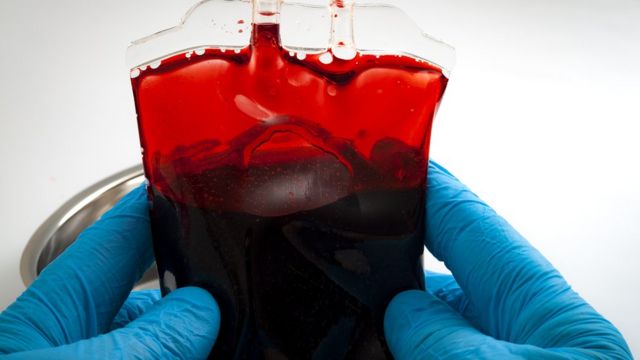

The transfusing anesthetist had no reason to doubt the result of the laboratory or the bedside test. A bedside test before transfusion of these units now showed a blood group A. In the operating room she received another 4 units of packed RBC of blood group A (D positive). Two A (D positive) units of packed RBC were transfused immediately without bedside testing because of the patient’s critical condition. The blood group was determined to be A (D positive). The on-duty medical laboratory technician determined the blood group from a tube, performed an antibody screening and compatibility testing. In the laboratory two serum tubes marked with electronically generated labels with the name of the patient arrived. At the same time two specimen for compatibility testing were sent to the laboratory.
PEOPLEWITHBLOOD TYP O BLOOD SAFTLY RESIVE IN A TRANSFUSSION FREE
A fast ultrasound test of the abdomen showed free fluid in the abdomen with a strong suspicion of a splenic rupture. In the first red blood count on the intensive care unit, the patient’s hemoglobin was 2.7 g/dl. In the next 4 h the patient’s state worsened so much that she had to be admitted to an intensive care unit. Two hours after an unremarkable colonoscopy the patient’s condition deteriorated clinically, and her hemoglobin dropped from 11.6 to 8.1 g/dl. An upper gastroscopy and an ERCP proved to be normal.

We consider it of utmost importance to report on this recorded unusual case, its course, and the medical consequences.Ī 64–year-old female patient was admitted to a medical department because of unclear upper abdominal complaints. This is not beneficial neither to the calculation of risks nor to the examination of the therapies. Our assumption, that reports on mismatched transfusions are frequently suppressed because of the forensic consequences which can be expected, has proven to be true, since a mismatched transfusion is usually the result of a severe and avoidable error by the physician. in New York with 5.2 per 100,000 where a strict mandatory reporting system was established. This also corresponds roughly to the numbers published by Linden et al. Supposed that only 50% of these cases lead to a complaint, this means five clinically relevant mismatches per 100,000 transfusions. A forensic search in Germany showed over 100 such occurrences in a 3 year period. There are, however, a few case reports on the absence of hemolysis despite major incompatibility.Īn intensive literature search revealed only 18 reports on mismatched transfusions in the last 50 years. This is due to severe antibody reactions between circulating allo-antibodies and the corresponding antigens of the mismatched red blood cells (RBC). Mismatched transfusions in the ABO-system entail more or less severe intravascular hemolysis, in some cases even combined with multiorgan failure and death.


 0 kommentar(er)
0 kommentar(er)
